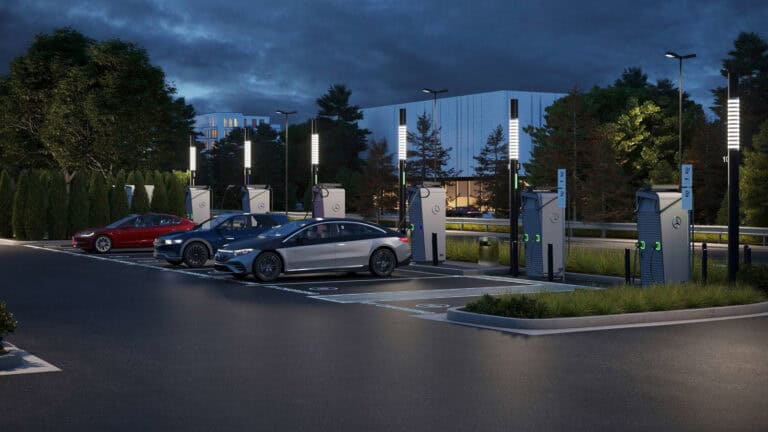Your electric bicycle is a significant investment and to get the most out of your e-bike, it will need proper maintenance. Bicycles are mechanical, with quite a few moving parts, and paying attention to their condition will not only make them last longer, but it will also keep you safer while you ride.
- Keep your bike clean
- Clean and lubricate the chain
- Check your tire inflation
- Check your brakes
- Take care of your battery
- Get regular tune-ups
ADVERTISEMENT
Spending just a few minutes on maintenance before and/or after you ride can make the difference between your electric bicycle lasting only a couple of years and you enjoying many, many years on it. Take time to check your bike, you can decide to do it before or after you ride, though there should be some pre-ride checks.
Visual Inspections: Key Maintenance for Your Electric Bicycle
Does everything look right? Low tires are pretty easy to spot. Even if you don’t check your tires with a tire pressure gauge each time, at least press on the tire tread with your thumb. If it isn’t very firm, you’ll likely want to check the actual pressure.
For a commuter or road bike, you want to make sure the tires are firm. The sidewall has the range of recommended pressure printed on it. You can go with the upper end of that limit for less rolling resistance, or the lower end for more comfort, especially if you have no suspension.
Mountain bike tires can vary, they tend to need lower pressure for grip. You can run lower pressure if you are running a tubeless setup, running too low a pressure in tires with tubes can lead to pinch-flats, which can slow down your fun.
Fat bike tires are usually tubed, but can run surprisingly low pressures. You may run at 20psi on the streets, but if you go into places with sand, you can run as low as 5-6psi for maximum grip. The sheer volume of the tires makes pinch-flats highly unlikely.
While you’re checking your tires, take a look at the condition of the tread and sidewalls. Any major wear and you should replace the tires. If you’re a serious cyclist and have a favorite brand of “shoes” for your bike, go with those. If not, replace them with the same as the ones they came with, or whatever your bike shop can source that they recommend for your bike.
Check the handlebar, make sure it doesn’t feel loose. Make sure your seat is also not loose. Check your pedals to see if they’re tightened all the way against the crank arm. If pedals start to back out of their threads, you can damage the threads of both the crank arm and pedal, which will both need to be replaced.
ADVERTISEMENT
Slow Down, Check Your Brakes
There are two types of brakes, hydraulic or mechanical. Within these, there are rim brakes and disc brakes. Yes, Virginia, there are hydraulic rim brakes, like those made by Magura. Hydraulic brakes use mineral oil in their lines to actuate the calipers, whereas mechanical brakes actuate the calipers using a wire and lever to squeeze the calipers against the rotor or rim.
If you have rim brakes, check to make sure that lever pressure is firm on both brakes and that the pads aren’t worn down. For disc brakes, just test that the lever pressure is firm.
Careful Cleaning
Most bikes and their electrical systems have an IP (ingress protection) rating for dust and water. Most can take a light hosing down with water (check your manual) to take off dirt, etc. Don’t turn your bike upside down for any of this, and make sure your bike is powered off. Don’t power- or pressure-wash your e-bike.
After hosing it down, you can simply wipe it down or use bicycle-specific cleaners. Make sure you don’t use any detergent on the brake rotors or rims if you have rim brakes. Any leftover detergent will cause your brakes to squeal loudly until it wears off. We knew this as kids, so when a friend wasn’t looking, we’d coat their rims with Simple Green. Then there was a half hour of knowing exactly when they applied their brakes, even from blocks away!

Once you’ve cleaned and dried your bike, it’s a good idea to clean and lubricate the chain. You can do it with a rag if it isn’t too dirty, but a muddy or black-looking chain needs special help. Use a toothbrush and some chain cleaner, or instead of the toothbrush buy a chain cleaning tool, you just spin the cranks to move the chain and wipe off the grime and excess lubricant. As for which lubricant to use, ask your bike shop.
Also, remove your battery and go over the contacts with a dry microfiber towel, then replace the battery. Charge your battery after that, so you’re ready to ride any time you want to.
ADVERTISEMENT
Take Your E-Bike in for Tune-ups
It’s a good idea to take your electric bicycle into your trusted, local bike shop for tune-up maintenance occasionally. If you’re a casual rider, once a year is probably fine. If you put on a lot of miles, say 100-150 miles a week, then consider getting a tune-up every 1000 miles or so. The bike shop will check everything from brakes, to drivetrain, to even the motor/battery if needed. Electric bicycle motors are designed for near-zero maintenance, so that is unlikely to be a problem. The shop will also make sure spokes are tight and wheels are true, and recommend any replacement parts.
If you bought a bike from a specific bike shop, that’s perfect. They sell the same bike and will usually have parts for it on hand. If not, call ahead and ask if they can work on the bike you have.
The Ear Test
When you’ve ridden your e-bike for a while, you’ll know the sounds it makes. It’s like having an older car, you know when there’s a new sound that means something. You’ll know the sound your motor makes when it’s going. Brakes can squeak, parts can rattle. If something sounds different, examine what it is that’s making the sound. Consider not riding it until you have it fixed.
Electric Bicycle Maintenance on the Road – Bring Tools!
Last, but not least, it’s a good idea to bring a light tool set, including allen wrenches that fit all the bolts on your bike (often 4-6mm), a patch kit, a spare tube, a small pump and a dollar bill. Why the dollar bill? Though it won’t often happen on the street, mountain bikers often ride on jagged rocks. Though modern tires are very sturdy, they can be torn. If you get a small tear in your tire, placing the dollar bill between the tube and tire will keep the tube from trying to bulge out through the tear. Having the right tools means you can fix most problems and get back on your way.
Really prepared riders will bring a chain-break tool in case your chain snaps. And maybe an extra link or two. If you ride tubeless, you might also add a tire plug in case you get a puncture.
Store your bike inside. Outside is a bad idea for two reasons. For one, it’s a theft risk, no matter how you lock it up. Second, even with regular maintenance, electric bicycles don’t live long when they’re left out in the elements. Extreme temperatures, rain, and harsh sun all cause deterioration and rust.
If you’re going to store your bike for a season (e.g. winter), get the battery to about 40% for storage, and check it once a month. Consider storing the battery inside if your garage gets cold.
ADVERTISEMENT

FEATURE IMAGE: TONY DONALDSON
FTC: We use income-earning auto affiliate links. Learn more.











